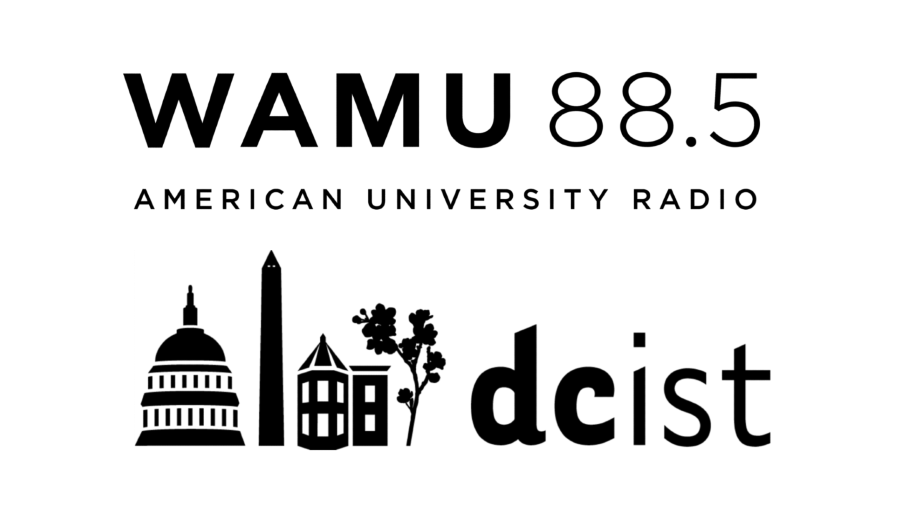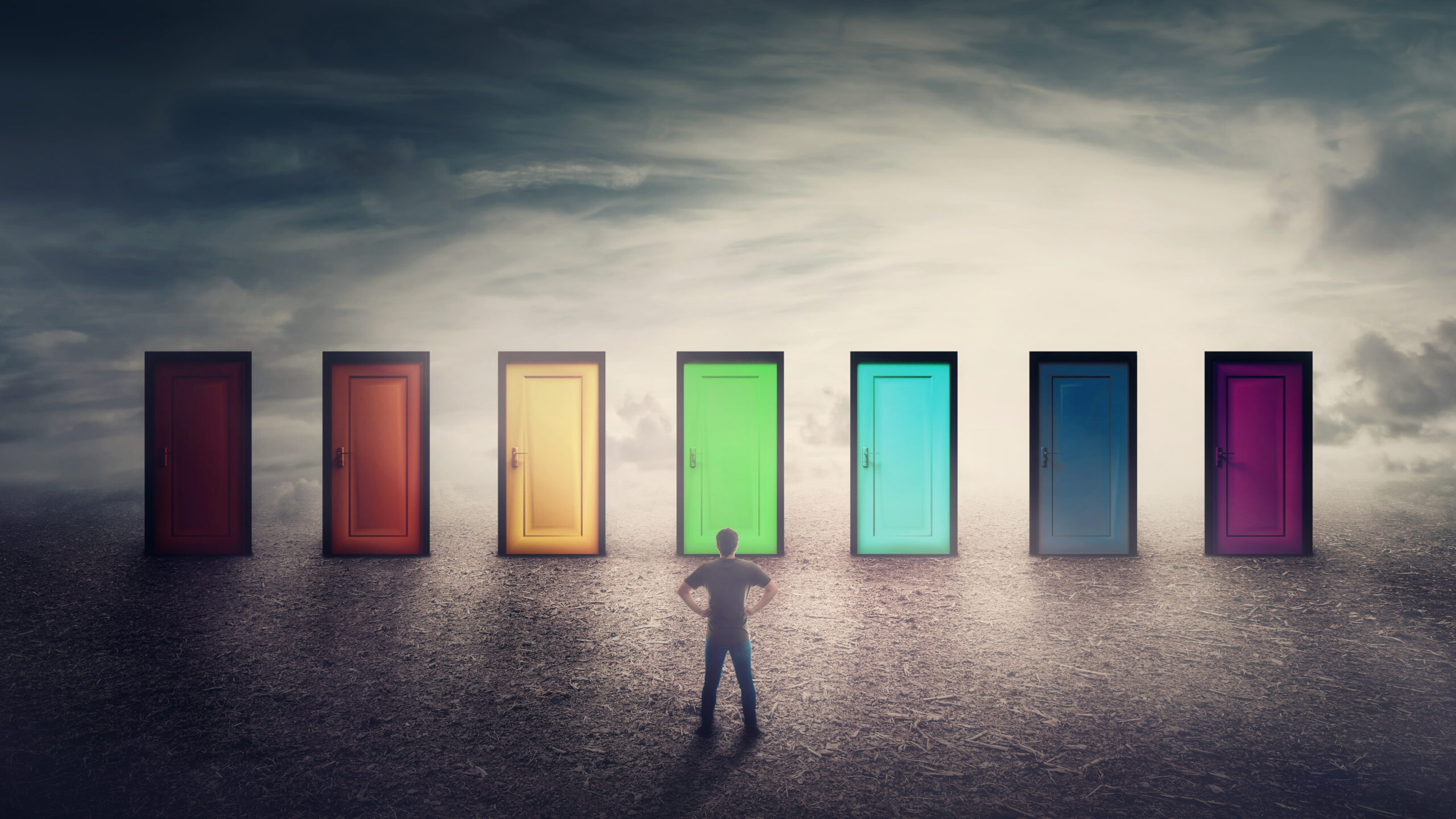
My heart and respect goes out to new parents bringing Generation Alphas – kids born in 2010 up to right now – into the world. Raising children is a harrowing task in “normal” times; today may be redefining the trials and tribulations of parenthood.
But no matter what’s going on in the world – from wars to pandemics – the one bit of wisdom most of us try to impart to our kids is to learn how to make intelligent choices. While there are many “uncontrollables” in this world, the decisions we make in life are often what determines our success and failure as people.
Of course, that’s true in our lives and the choices in front of us: school, marriage, careers, and the kind of person we choose to be.
And so it is in business as well. Complain all you will about C-suite salaries, as well as who’s sitting in those X-Chairs. It’s an awesome responsibility, whether you’re making the company’s calls for a staff of 20 or a workforce of 2 million. So much of the time, the fulcrum that divides success or failure rests with the decisions that come out of the corner office.
It has become convenient and perhaps even cathartic for those not in power to mercilessly criticize those tasked with making those tough calls, especially on social media. While most CEOs don’t spend much time doom-scrolling through their social feeds, it is, in fact, lonely at the top. As someone who has been making (or co-making) the big decisions for my company for more than four decades now, it doesn’t get any easier over time. And in fact, the weight of choice – especially during perilous times – has never felt more burdensome.
And make no mistake about it. Most company leaders aren’t frolicking through their jobs these days. Feelings of uncertainty and instability are all around us. So is change. And thanks in no small part to generative AI, there’s a strong awareness we’ve entered another epic tech wave, on par with the emergence of the Internet in the ’90s and the smartphone in the early 2000s.
As we’ve dutifully reported from CES 2024 last month, seemingly every company is jockeying for position in the AI chronicles, re-evaluating their business models through the Artificial Intelligence lens. Any CEO that tries to tell you that AI won’t play much of a role in their immediate or long-term futures is either lying or may be packing up their offices before long. While many may establish their “north stars” – their big boulder goals for their companies – any leader who isn’t rethinking the model in AI terms isn’t doing his or her jobs.
In the radio business, we’ve begun to see some of those choices being made, often in the form of layoffs. When a leader has to announce job cuts, especially revolving around a particular division or initiative, it’s a sure sign past decisions have not held up especially well.
We’re watching this play out with great difficulty in the public radio space right now, a platform in radio not known for its shoot-from-the-hip, radical decision-making, or major risk-taking. And yet, a number of mega entities – NPR included – have made the difficult decisions to institute deep and painful staff cuts. For NPR, it was 10% of their workforce only a year ago. And they’re still reeling from the aftershocks.

Next month, NPR welcomes a new CEO to the organization, Katherine Maher, who comes to the organization outside the radio and media worlds. In short order, she will need to gain an understanding of her organization, its staff, hundreds of affiliate stations, and a complex set of problems and challenges. And yes, it’s an election year. I predict she’ll enjoy a very short honeymoon as she grapples with the enormous issues in front of her.
Already, two of public radio’s mavens – Kristen Muller and Eric Nuzum – have written Maher “open letters” in an effort to guide the neophyte-to-radio CEO. Both well-written and well-thought out, Maher will have some tough calls to make – this year.
Decisions, decisions.
WNYC, once the unquestioned leader in the podcast arena in the public radio space – instituted deep cuts this past fall, amounting to a painful rethink of their overall content strategy. All told, 6% of their staff departed, mostly from their podcast division. As their CEO, LaFontaine Oliver, explained to a shocked staff, that some of WNYC’s podcasts were created because the newsroom deemed them to be good ideas.
On the contrary, Oliver explained, “I know that’s probably hard for some of you all to hear, because you think we’ve been audience-focused, but we have not, we have been more internally focused. And we have to put the audience at the center of what we are doing.”
Decisions, decisions.
 And last week, it was WAMU ‘s turn in the barrel. Located in Washington, D.C., they’ve enjoyed several years of stellar ratings. Until they didn’t.
And last week, it was WAMU ‘s turn in the barrel. Located in Washington, D.C., they’ve enjoyed several years of stellar ratings. Until they didn’t.
As part of their content redefinition strategy, WAMU pink-slipped 15 employees, shuttering its local news site, DCist, in the process. As Axios explained, these painful moves away from digital news publishing “will allow WAMU to focus on its core radio products, as well as new digital audio opportunities like podcasts and live events.”
WAMU GM Erika Pulley-Hayes told Axios, “We’re making the choice to invest in what we’re better at than anyone else in this town, and that’s audio.”
Decisions, decisions.
And that brings us to one of the biggest decisions I’ve seen a media/tech company make in some time – and I’m talking Apple, the company at the top of everyone’s pyramid.
According to Axios reporter Jacob Knutson, Apple has made the difficult choice to jettison plans to build a much-anticipated electric car. Rumors of this project go back years now. And if you’re wondering how outlandish it is that automotive innovation would come from a tech company, first think Tesla.
And then consider what’s going on at Sony. Their Afeela mashup with Honda is an initiative we first saw at CES last year. The vehicle (pictured) is not only beautiful, but obviously tricked out with the latest and greatest in-dash technology, as you can imagine. Sales in the U.S. are expected to start in 2026. That is, if Sony and/or Honda aren’t faced with major decisions of their own between now and then. At least they have Honda doing the car part.
greatest in-dash technology, as you can imagine. Sales in the U.S. are expected to start in 2026. That is, if Sony and/or Honda aren’t faced with major decisions of their own between now and then. At least they have Honda doing the car part.
Back to Apple, they’re no stranger to cars, having launched the popular CarPlay dashboard ecosystem 10 years ago next month. But an entire car? Apparently for the brain trust in Cupertino, that’s an entirely different call.
As Knutson reports, Apple grandiose plans to design and manufacture an autonomous EV has been scuttled. Bloomberg picked up the story from “anonymous sources.” Don’t look for Apple to put out a press release like NPR, WNYC, and WAMU did to announce their reorgs. That’s not the way they roll.

But they could obviously see the auto and tech industries have slammed their collective brakes on self-driving cars – except for those dudes driving those GMCs with “We Will Rock You” blaring.
And it’s clear that electric cars have their issues as well. Perhaps Apple saw that EVs were not flying out of showrooms, while recharging infrastructure has a long way to go.
You might wonder why Apple would even have to face decisions about where to focus – and where to abandon past strategies. But as big as they are, even Apple has to focus its energies and its massive staff on what they determine to be the best opportunities.
That’s the other shoe that Apple has appeared to drop. No longer tethered by developing a new car – well outside its core competency – the company will now be redoubling its efforts on AI. The same reports show many engineers from Apple’s disbanded auto division will be reassigned to “generative AI projects.”
Decisions, decisions.

As NYPM CEO Oliver painfully explained, being audience-focused is the foundation of these difficult retrenchings. We don’t know what type of research Apple conducts, but I think we can agree its as extensive and deep as it needs to be.
As for public radio – or all of radio for that matter – it’s a whole different thing. “Research” isn’t testing songs on the current playlist or determining “which station is Chicago’s news leader.” It is about listening to target audiences, understanding their concerns and their needs. And then responding appropriately.
And if it were easy, there would be no epic fails. As we know only too well, whether it’s in automotive, technology, or radio, it is not hard to find products, efforts, and initiatives that have failed to get off the launching pad.
Industries are littered with debacles, disasters, and blowouts. They are part of the fabric and byproducts of innovation. As we all know, you often have to experience failure before you enjoy success.
That hit home for me at CES 2024 this year. Apart from the beautiful gadgetry and technology was an exhibit with the name, “The Gallery of Flops,” a display full of would-be break-throughs that turned out to be disasters for the companies that spawned them.
exhibit with the name, “The Gallery of Flops,” a display full of would-be break-throughs that turned out to be disasters for the companies that spawned them.
It was not lost on me that one of these losers was Apple’s now infamous Newton, one of the original PDAs (personal digital assistant), released with much hype in 1993. A long five years later, and Newton was no more.
Back to “The Gallery of Flops,” there’s a method to its apparent madness. It’s the genius of a company called Prelaunch, a method its creators have developed that pre-tests the market for consumer interest in new gadgets, inventions, and innovations.
As a researcher, I spoke extensively to Prelaunch reps, as well as its CEO. No research is foolproof, of course, especially when you’re trying to launch a project that doesn’t exist. As they pitch, Prelaunch will “validate your product concept with data you can trust.”
Actually, more research that truly goes after the big existential questions facing radio would be welcome right about now. There are big decisions to be made with precious little data with which to make them.
Decisions, decisions.
I wonder if Prelaunch can test podcast concepts.
- What To Do If Your Radio Station Goes Through A Midlife Crisis - April 25, 2025
- A 2020 Lesson?It Could All Be Gone In A Flash - April 24, 2025
- How AI Can Give Radio Personalities More…PERSONALITY - April 23, 2025




The silver lining in Apple’s bailout of EV production is they now have (as you mentioned Fred) more capital to spend with Nvidia on AI chips. Thankfully we listened to our 18 year old a few years ago when he said “you guys should buy Nvidia” .
Yeah! Your scratch golfer & stock picker, who also probably suggested AMAT & AVGO amongst a few others.
WOW! Just looked at Nvidia’s 5-year stock price chart. Is your 18-year-old available for consultations, by chance?
I had the same thing happen 20 years ago when my son was in middle school and had the assignment to “buy” three stocks with $1,000 distributed evenly. At the end of the exercise, I promised him I’d take a real $1,000 and invest it for himw as allocated in those three stocks. One was Apple, around the time the iPod was beginning to soar. His $333 investment quickly tripled. As I was marveling to my wife about his investment acumen, my wife said, “Well, why don’t WE buy some Apple. It’s not too late, is it?” It wasn’t and we did. You know the rest of the story. I think Leo’s got a future in the financial community.
The primary challenge for radio is how commercials are presented. The streamers have already determined that 6-8 minute stopsets are detrimental to overall listening and likely not effective for too many sponsors. Yet, how many stations have actually tried an alternative way of presenting commercial content? It seems to me that the answer is relatively few, especially over a significant period of time. It would likely have to be in PPM markets for the effect to yield meaningful data in a reasonable amount of time. We can also get those results quickly by looking at online listening. No matter what the delivery method, long stopsets that often repeat poorly produced commercial content have to be a TSL killer.
Where to start?
It’s not just poorly produced content its competitors back to back at worst or to close in
the same stopset.
Ask any former traffic manager and they’ll say this drives them crazy.
Listening to the WLS/WCFL rewind over the Labor Day weekend. Radio was much more listenable with
shorter stop sets.
I maintain broadcast radio has a once-in-a-lifetime chance to “fix” its commercial load & architectural problems during the early weeks and months of the pandemic when much of the medium’s ad support came to a painful halt. Sadly, that ship has sailed.
It’s all about the content, connection and presentation.
Always, Clark.
Unfortunately, I think that WAMU’s cuts were announced and handled very poorly. Throughout the day on Friday, there were plenty of stories like this…
https://washingtoncitypaper.com/article/680833/dcist-shuts-down-15-staffers-laid-off
Wow, there’s spin and then there’s this. Thanks for llinking this, Eric.
Thanks for a great post. One thing radio has been excellent at for decades is selling an identity people can relate to. We shouldn’t be surprised that more targeted media has started to eat our lunch in that arena as we flounder about in areas we aren’t as familiar with.
Katherine Maher’s big challenge won’t just be in, as Eric Nuzum suggests, “Start with what public radio is really good at and build a bridge from here forward,” but also in ridding the brand of the stuffy, elitist, exclusionary image that has grown around it for the last couple of decades, at least. A generation of younger listeners would be more likely to connect with the scrappy attitude and outsider feeling of a much earlier NPR.
This actually reminded me of what may have been (to me, at least) one of the most-interesting failed formats on a major-market commercial FM: the initial version of KPIX-FM, which tried taking come cues from NPR.
https://www.nytimes.com/1995/06/12/business/fm-radio-stations-start-to-carry-more-am-fare.html
Thanks for sharing that. It was interesting that they didn’t just look at it as N/T on FM (which was a huge trend in the 90’s and still happens), but at long-form storytelling, something that most commercial N/T stations tend to steer clear of. I’ll have to look up the history to see why it failed. It may have some cues for what NPR might change.
A lot to think about here, Frank. Thanks for extending thte discussion.
The crisis that public radio faces in 2024 is the very real threat that if the Republicans take the White House in November, it will only be a matter of time until NPR as we know it will be completely gutted and reborn as something unrecognizable.
All of these academic discussions about knowing your audience, digital transformation and commodity vs. scarcity will vaporize.
Also – If you really want an incoming CEO to read your letter and take your suggestions seriously, why not send it to them personally instead of posting it on Substack?
You bring up some harsh possibilities, Vince – and I would not rule any of them out.
Agreed As for public radio – or all of radio for that matter – it’s a whole different thing. “Research” isn’t testing songs on the current playlist or determining “which station is Chicago’s news leader.” It is about listening to target audiences, understanding their concerns and their needs. And then responding appropriately.
Listening to what people want from radio is key not what we think our audience & listeners want ! There is a huge difference I’ve been in this biz s long time we make way too many assumptions abt what listeners really want & what our advertisers clients & sponsors really need from us !
Wake up radio folks out there
Good Morning Vietnam
Listening to the listeners – alwyas a smart plan.